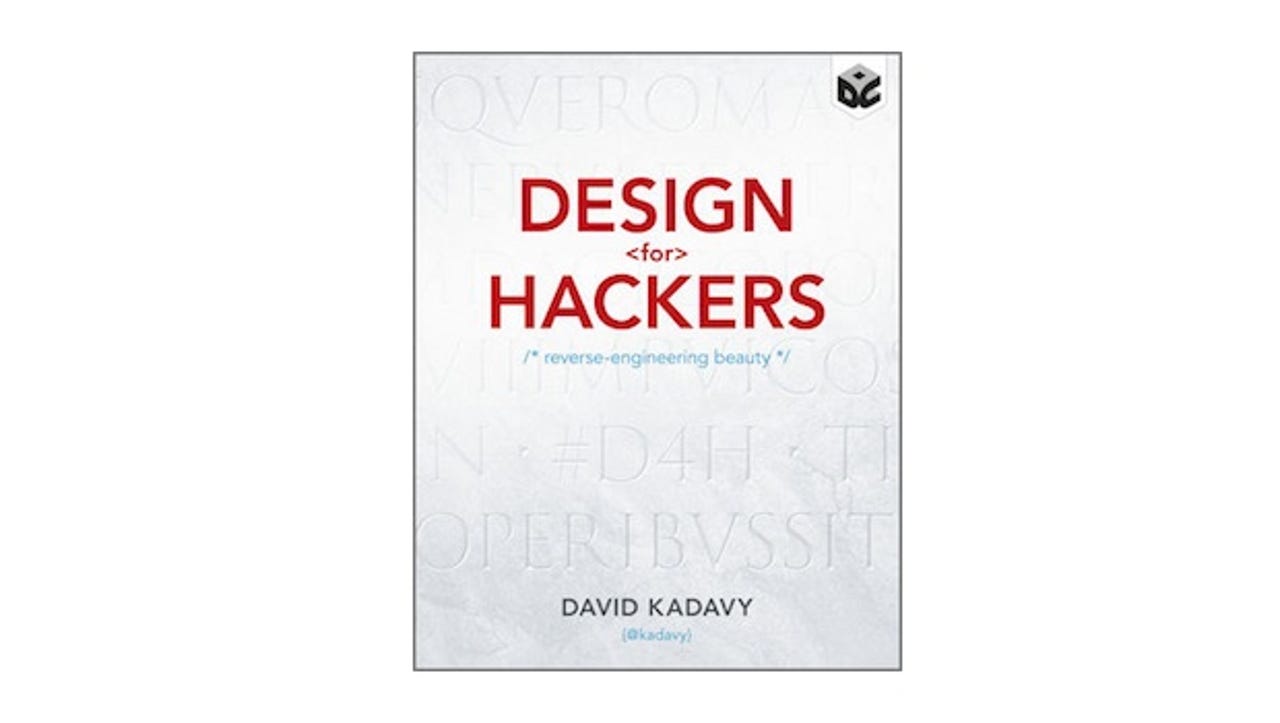Book review: Design for Hackers

For a book so packed with fascinating and informative details, Design for Hackers: Reverse Engineering Beauty starts much too slowly. The author is so keen to tell you what he's going to tell you, what difference he hopes it will make to you and why design literacy matters that the first 40 pages are essentially an extended introduction (even if reminding people to sketch out ideas is always a good thing).
Skip to the meat of the book where Kadavy dives in and takes something many people know instinctively — Comic Sans is not the right font for serious design — and analyses why, in a way that makes immediate sense. Instead of simply declaring that something is good or, in this case, bad design, he shows you why.

The thickness of every stroke in every letter is the same, leading to thick spots where lines overlap and thin spots where there are spaces within the shape of a letter so passages of text are an uneven mess of light and dark on the page, individual pairs of letters aren't designed to sit well side by side and the letter shapes are designed to be readable on screen when the edges aren't smoothed out by anti-aliasing, not on paper when they are.
Not only do you understand what you've been reacting to in Comic Sans all along; you also get a lightning course in typographic design, followed up by the wonderfully clear explanation of serif and san serif type that goes back to Roman inscriptions, painted graffiti in Pompeii that Kadavy wittily dubs the Twitter of Ancient Rome and medieval manuscripts, and forward to the first computer fonts, the classic Mac font Chicago and web fonts.
If you care about design, you'll love the details. If you're trying to understand why you need to care about design, the details should keep you interested enough to absorb the lessons. And every section ends with a handful of guidelines and principles that add up to pretty much the rules that Kadavy says he doesn't want to teach you.
Most of the rules you think you know about design are things like proportion, the rule of thirds and the golden ratio of the Fibonacci sequence — which shows up in design from da Vinci's Vitruvian man to the (now replaced) New Twitter interface. Kadavy's not a fan of the golden ratio, but he shows the effect of other pleasing proportions, with plenty of examples of what works and instructions on how to take advantage of that.
Composition and design principles are illustrated with heat maps of how users look at web pages (generally an F shape, with the bottom right corner almost ignored), as well as the variety of ways sculptors and painters lead your eye around a design using tools like foreground, background, colour, similarity, dominance, rhythm, direction and texture. Again, this is liberally illustrated with annotated examples and followed by how to use the same tools to put together a blog design that's very simple but has a lot of impact, as well as how to make individual elements like tables easier to read. Because he explains why and how specific effects work, you get a good understanding of the principles behind specific examples. A later section covers similar principles in font design, explaining why certain fonts work well together, again in great detail. This won't make you an instant expert in fonts, but it will give you the principles to use fonts well without being an expert — and if it inspires you to learn more, you'll be starting with a good grounding.
A design can feel fresh or dated, because you're going to see it in the context of the culture — and technology — around it. Showing how Impressionism and Post-Impressionism are reactions against photography and the artistic establishment makes an unusual introduction for showing how the gradients, rounded corners and reflective surfaces of the web 2.0 look grew out of the design of the original candy-inspired iMac and the Mac OS X Aqua interface — which was meant to make you want to lick the screen — and evolved into the hyper-real interfaces showing up on web sites today. And on the next page Kadavy is contrasting lessons about SEO and design (make the content compelling) with the way breakthrough medieval book publisher Aldus Manutius combined new italic typefaces and an easy-to-carry book format that made ancient Greek literature the iPad of the 1600s. It's all about information accessibility.
The section on colour is comprehensive, clear and full of details, taking usually complex ideas like colour spaces and gamuts and the way the human eye perceives colours and making sense of them. If you've ever struggled to find the colour you want in a colour picker dialogue or to come up with a palette of colours that work well together, or you want to use colour to explain data in a map or chart without misleading viewers accidentally because you use a colour that's too light for its position on the data scale, you'll come away knowing exactly what to do. A very few data tools, like Tableau, have these principles built in. if you use anything else — including PowerPoint — you should read this book. The section on colour psychology is interesting, but nowhere near as comprehensive and convincing. Even if you're not convinced you can get the effects Kadavy suggests yellow or red can induce, it's useful to be reminded that colour isn't just there to look pretty.
This is all both practical and inspiring, and it's the combination that makes Design for Hackers so successful. The continual and uncritical admiration of Apple design can grate, especially when Kadavy simply praises various Apple product designs without explaining why. It would have been nice to see some analysis of Microsoft's Metro design principles, for example, both to balance the overemphasis on Apple and because many of them show up along the way (like not putting rules in tables).
Despite promising not to give you lists of rules, Design for Hackers does give you rules, as well as tools and principles. It also explains why they work and how to make them work for you. The mix of examples and explanation should equip you to understand the designs you come across (and why you like or dislike them) and improve your own. No matter how much you already know about design, you'll learn something useful, fascinating or both.
Design for Hackers: Reverse Engineering Beauty
David Kadavy
John Wiley
352 pages
£24.99
ISBN: 978-1-1199-9895-2
Mary Branscombe